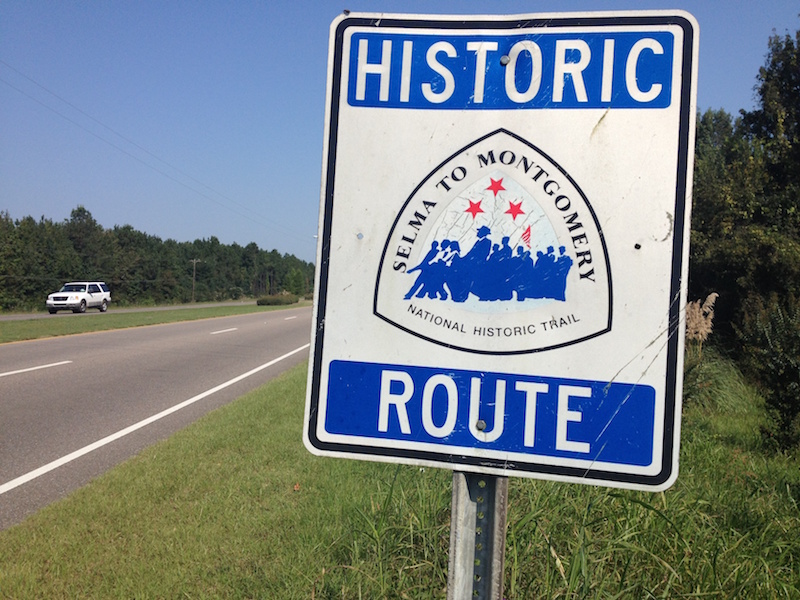Top 10 National Trail Sites with Outstanding Historic Experiences

Exert from “The Top Ten Guide to National Trails” by Bill Buck. Photo by Bill Buck.
The National Trails System is an essential way to immortalize our nation’s defining moments—from the tragic to the transcendent, the horrifying to the hallowed. The following sites feature multiple national trails, a great excuse to visit a specific locale and be able to explore a number of trails. Although all of the following items are among the best, it’s not easy to limit the country’s many historic places to ten. Some sites had to be left out for the sake of brevity. The following sites are among the greatest historic places on the national trails.
- Harpers Ferry National Historical Park, West Virginia
Appalachian National Scenic Trail
Potomac Heritage National Scenic Trail
One of the best “living history” towns in the United States, Harpers Ferry features attractions and accommodations for all types of visitors. Rafting and tubing on the Potomac River (at reasonable rates) is one way to begin discovering the rich history at this unique site, where two national trails intersect. Harpers Ferry is located directly on the borderline of three state borders, a rarity. - Colonial National Historical Park, Virginia
Washington-Rochambeau Revolutionary Route National Historic Trail
The final days of the Revolutionary War remain on display here at this carefully preserved and well-interpreted National Park Service gem. Follow in the footsteps of General George Washington at this historic site of the British surrender and walk across battlefields today that look much as they did in 1789. The Washington-Rochambeau Revolutionary Route National Historic Trail extends here to the shores of Yorktown. - Jamestown Settlement, Virginia
Captain John Smith Chesapeake National Historic Trail
Washington-Rochambeau Revolutionary Route National Historic Trail
Just a short drive south of Colonial National Historic Park (on the stately Colonial Parkway) is Jamestown Settlement. This pastoral site hides dark stories in its landscape: political disasters, suicidal scandals, and confirmed cannibalism occurred here in the early 1600s. This site is the beginning of the Captain John Smith Chesapeake National Historic Trail. - El Rancho de las Golondrinas, New Mexico
Santa Fe Trail National Historic Trail
Old Spanish National Historic Trail
El Camino Real de Tierra Adentro National Historic Trail
This carefully managed ranch is considered the “Southwest’s Premier Living History Museum.” Just outside of lovely Santa Fe, step into a different world and see through the eyes of the original Spanish settlers of the 1500s. The Santa Fe Trail, Old Spanish Trail and El Camino Real de Tierra Adentro historic corridors are all nearby. - Yellowstone National Park, Wyoming
Nez Perce National Historic Trail
Continental Divide National Scenic Trail
It’s a little known fact that the tragic flight of the Nez Perce tribe involved skirmishes with the U.S. military in newly created Yellowstone Park. Follow these men, women, children and elders of the tribe who trekked across grand mountain passes and rushing rivers and journey into Yellowstone, where signage and maps guide visitors today. The Continental Divide National Scenic Trail Trail is also in the park. - City of Natchez, Mississippi
Natchez Trace National Scenic Trail
Natchez is the historic starting point of the Natchez Trace route. The city just celebrated its 300-year anniversary and has more antebellum houses than anywhere in the South. Walk beneath huge shade trees for a picnic on the edge of the Mississippi River and imagine the lifestyles of early American traders who began their long treks here in relative civilization before setting out on the wild and treacherous Natchez Trace route. - Presidio of San Francisco, California
Juan Bautista de Anza National Historic Trail
Stories of the early inhabitants of San Francisco Bay and their modern-day descendants will be heard here, including Spanish settlers and tribes of the area whose lifestyles were transformed by the Mission era. In 1776, the Anza expedition settled what would become San Francisco and today visitors can still see views unchanged since then at the edge of the city. A restored Officers’ Club and new Presidio Museum provide views of the fort’s original adobe walls. Archeological excavations are ongoing here with hands-on learning and cultural activities throughout the year. - Fort Clatsop, Oregon
Lewis and Clark National Historic Trail
Fort Clatsop is the site of the winter encampment of Lewis and Clark and the Corps of Discovery near the mouth of the Columbia River. An excellent visitor center at Lewis and Clark National Historical Park immerses visitors in trails and activities east of Astoria, Oregon, where a restored replica of the original fort occupies the same small patch of ground where the Corps of Discovery spent the long winter of 1805-06. - Museum of the Cherokee Indian, North Carolina
Trail of Tears National Historic Trail
The Trail of Tears was an example of “America at its worst” — misguided treatment of tribes like the Cherokee led to their forced removal and many deaths in the 1830s. Members of the Eastern Band of Cherokee evaded capture by hiding in the rugged mountains of Appalachia and today some of their descendants maintain a foothold here in the town of Cherokee. This museum tops the list for anyone wishing to learn about the life and history of tribes in this region and their contributions to American life. - Campsite #1, Alabama
Selma To Montgomery National Historic Trail
The Selma to Montgomery Trail can be experienced in a day, making it unique within a system of mostly long-distance National Trails. The city of Selma is a good place to begin the trail and the nearby Campsite #1 is where Martin Luther King and hundreds of activists spent the night in 1965. It offers particular insight into their journey and is one of the best places in America to understand the meaning and struggles of the civil rights movement. A visitor center here with nice parking and facilities provide a good place to walk part of the trail.